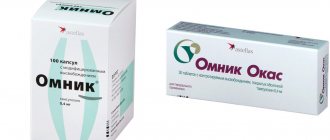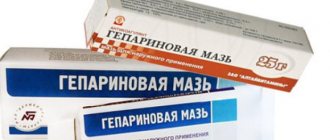| Ceftriaxone | |
| Ceftriaxonum | |
| Ceftriaxone | |
| Chemical compound | |
| IUPAC | 6R-6alpha, 7beta(Z)-7-2-amino-4-thiazolyl(methoxyimino)acetyl amino-8-oxo-3-(1,2,5,6-tetrahydro-2-methyl-5,6-dioxo -1,2,4-triazin-3-yl)thiomethyl-5-thia-1-azabicyclo 4.2.0 oct-2-ene-2-carboxylic acid (as disodium salt) |
| Gross formula | C₁₈H₁₈N₈O₇S₃ |
| Molar mass | 554.58 g/mol |
| CAS | 73384-59-5 |
| PubChem | 5479530 |
| DrugBank | APRD00395 |
| Classification | |
| ATX | J01DD04 |
| Pharmacokinetics | |
| Bioavailable | n/a |
| Metabolism | Negligible |
| Half-life | 5.8–8.7 hours |
| Excretion | 33-67% kidneys, 35-45% biliary |
| Dosage forms | |
| powder for preparing a solution for intravenous administration, powder for preparing a solution for intravenous and intramuscular administration, powder for preparing a solution for intramuscular administration | |
| Other names | |
| Cefamed® (World Medicine), Rotacef®, Azaran, Axone, Biotraxon, Ificef, Lendacin®, Lifaxone, Longacef, Loraxone, Megion®, Medaxone, Movigip®, Oframax®, PEO, Rocefin, Stericef, Tercef, Torocef®, Triaxone , Forcef, Hizon, Cefaxone, Cefatrin, Ceftriaxone sodium salt, Cefogram, Cefson, Ceftriabol®, Ceftriaxone, Cef III® | |
| Ceftriaxone at Wikimedia Commons | |
Ceftriaxone
(6R-6alpha, 7beta(Z)-7-2-amino-4-thiazolyl(methoxyimino)acetyl amino-8-oxo-3-(1,2,5,6-tetrahydro-2-methyl-5,6 -dioxo-1,2,4-triazin-3-yl)thiomethyl-5-thia-1-azabicyclo 4.2.0 oct-2-ene-2-carboxylic acid (in the form of disodium salt)) is a broad-spectrum cephalosporin antibiotic actions.
Release forms, composition
Available in powder form, packaged in 0.25; 0.5; 1; 2 g. It is in a glass vial or ampoule into which the dilution solution is poured. In this way, you can prepare a drug for intramuscular injection or intravenous drip. The medicine is white or with a yellow tint.
The main active ingredient is ceftriaxone. This is an antibiotic belonging to the group of cephalosporins and β-lactams. They have a special chemical structure based on a 7-ACC ring. The drug has a bactericidal effect by suppressing the formation of peptidoglycan. This substance is part of the bacterial shell, which is destroyed without it. With such damage, the cell cannot function and the microorganism dies.
pharmachologic effect
A third generation antibiotic that slows down the formation of structural elements of the bacterial shell. At the same time, the drug oxidizes the enzymes that ensure the strength of the cell wall and makes it completely impossible to restore it.
The main percentage of the active form of the drug is excreted by the kidneys within 48 hours, and can be partially excreted in the bile. Delayed elimination is observed in elderly patients, children, newborns and in renal failure. In the latter case, the formation of accumulations and infiltrates is possible.
Ceftriaxone is completely absorbed an hour and a half after intramuscular administration (its maximum concentration in the blood is observed). It has the ability to build reversible bonds with blood proteins and remain in the body for a long time without disturbing the active form. Easily penetrates into all organs, including cerebrospinal fluid and bone tissue. Can be passed on to baby through mother's milk.
How it affects the body
In the human body, ceftriaxone has a bactericidal effect. It makes it impossible to synthesize a substance – murein, from which the bacterial wall is made. Myrein is a base laced with short protein chains. Thanks to him, the bacterium exists. If its synthesis is blocked, new bacterial ones are not formed, and existing ones are destroyed.
Ceftriaxone acts on a huge number of rods, cocci, both gram-positive and gram-negative. It is not effective against:
- methicillin-resistant staphylococci;
- group D streptococci;
- enterococci.
The antibiotic penetrates into all body fluids: plasma, cerebrospinal fluid, bile, urine.
Indications for use
The instructions for the drug Ceftriaxone include the following diseases for antibiotic therapy:
- meningitis, meningoencephalitis;
- diseases of the respiratory system of a bacterial nature - pneumonia, complicated bronchitis, bronchiectasis, lung abscess, empyema, exudative pleurisy;
- complicated and uncomplicated infections of the urinary system - inflammation of the kidneys, renal pelvis, pyelonephritis, urethritis, complicated cystitis;
- infections of soft tissues and skin - furunculosis, phlegmon, carbuncles, boils, streptoderma, staphyloderma, pyoderma, erysipelas;
- infectious diseases of the gastrointestinal tract - retroperitoneal abscess, diverticulitis, complications due to appendicitis, including complications after surgical removal of the appendix or gallbladder;
- postpartum complications, including complications after cesarean section;
- infectious diseases of the musculoskeletal system - septic arthritis, osteomyelitis, bacterial inflammation of the periarticular bursa;
- infections of the ENT organs – sinusitis, ethmoiditis, mastoiditis, purulent otitis media, sinusitis;
- complications after abortion, uterine probing, diagnostic curettage of the uterine cavity;
- complicated and uncomplicated gonorrhea;
- bacterial prostatitis of acute and chronic forms;
- suppuration of burns and frostbite;
- postoperative complications - peritonitis, sepsis, purulent inflammation of wound surfaces.
Ceftriaxine is prescribed to children for the same diseases as in adults. In practice, the drug is administered in a hospital for the diagnosis of pneumonia, severe forms of bronchitis and other diseases of infectious origin that affect the child’s body.
The duration of the course differs from patient to patient, as it is influenced by the severity and nature of the disease. For example, if a child has meningitis caused by meningococcus, Ceftriaxone is prescribed for 4 days. For diseases caused by streptococci, injections are used for at least 10 days. For Lyme disease, treatment is continued for 14 days.
If Ceftriaxone is chosen as a preventive medicine for a child who is undergoing surgical treatment, then the injection is given once 0.5-1.5 hours before surgery.
Indications
Bacterial infections caused by sensitive microorganisms: infections of the abdominal organs (peritonitis, inflammatory diseases of the gastrointestinal tract, biliary tract, including cholangitis, empyema of the gallbladder), diseases of the upper and lower respiratory tract (including pneumonia, lung abscess, empyema pleura), infections of bones, joints, skin and soft tissues, urogenital area (including gonorrhea, pyelonephritis), bacterial meningitis and endocarditis, sepsis, infected wounds and burns, chancroid and syphilis, Lyme disease (borreliosis), typhoid fever, salmonellosis and salmonellosis carriage. Prevention of postoperative infections. Infectious diseases in persons with weakened immune systems.
Contraindications for use
The drug in question is not prescribed to patients up to 12 weeks. gestation of the fetus. Its use is dangerous due to changes in the embryo. After 12 weeks the use of the medicine is permitted. Doctors recommend choosing a substitute. When the patient is breastfeeding, the baby is provided with artificial nutrition for the duration of therapy.
Ceftriaxone is considered a potent drug. It has a fairly large list of contraindications:
- prematurity of the baby;
- allergy to cephalosporins;
- lactation period;
- high level of bilirubin in the blood of the newborn;
If the patient has at least one of the listed contraindications, Ceftriaxone is not used. The doctor selects another analogue of the medication.
How to properly dilute an antibiotic for injection
- Injection solutions should be prepared immediately before use.
- To prepare a solution for intramuscular injection, 500 mg of the drug is dissolved in 2 ml, and 1 g of the drug is dissolved in 3.5 ml of a 1% lidocaine solution. It is recommended to inject no more than 1 g into one gluteal muscle.
- Dilution for intramuscular use can also be done using water for injection. The effect is the same, only the injection will be more painful.
- To prepare a solution for intravenous injection, 500 mg of the drug is dissolved in 5 ml, and 1 g of the drug is dissolved in 10 ml of sterile water for injection. The injection solution is administered intravenously slowly over 2-4 minutes.
- To prepare a solution for intravenous infusion, 2 g of the drug is dissolved in 40 ml of one of the following calcium-free solutions: 0.9% sodium chloride solution, 5-10% dextrose (glucose) solution, 5% levulose solution. The drug at a dose of 50 mg/kg or more should be administered intravenously over 30 minutes.
- Freshly prepared solutions of ceftriaxone are physically and chemically stable for 6 hours at room temperature.
Ceftriaxone: injections for children
When a doctor’s prescription is based on the administration of Ceftriaxone by injection, the question immediately arises of how exactly to administer the drug to children. For intravenous administration, 0.5 g of Ceftriaxone is diluted into 5 ml of purified aqueous solution. To relieve the pain from the injection as much as possible, you need to do it slowly, about a few minutes.
Often in combination with probenecid or in association with β-lactamase inhibitors such as clavulanic acid, sulbactam or tazobactam. Among less toxic antibiotics, most adverse reactions are actually due to individual hypersensitivity reactions, such as an allergy to penicillic acid, which occurs with skin rashes or fevers. In rare cases, anaphylactic shock may occur. Long-term use or massive doses may also cause kidney damage and depletion of intestinal bacterial flora, leading to possible intestinal transfusions with antibiotic-resistant opportunistic microorganisms.
Ceftriaxone - Instructions for use
Intravenously, intramuscularly. Adults and children over 12 years old - 1-2 g once a day or 0.5-1 g every 12 hours, the daily dose should not exceed 4 g. For newborns (up to 2 weeks) - 20-50 mg/kg/day. For infants and children under 12 years of age, the daily dose is 20-80 mg/kg. In children weighing 50 kg and above, adult doses are used.
A dose of more than 50 mg/kg body weight should be administered as an intravenous infusion over 30 minutes. The duration of the course depends on the nature and severity of the disease.
For gonorrhea - intramuscularly once, 250 mg.
To prevent postoperative complications, a single dose of 1-2 g (depending on the degree of risk of infection) is prescribed 30-90 minutes before the start of surgery. During operations on the colon and rectum, additional administration of a drug from the group of 5-nitroimidazoles is recommended.
For bacterial meningitis in infants and young children - 100 mg/kg (but not more than 4 g) 1 time per day. The duration of treatment depends on the pathogen and can range from 4 days for Neisseria meningitidis to 10-14 days for susceptible strains of Enterobacteriaceae.
Children with skin and soft tissue infections - a daily dose of 50-75 mg/kg once a day or 25-37.5 mg/kg every 12 hours, not more than 2 g/day. For severe infections of other localizations - 25-37.5 mg/kg every 12 hours, no more than 2 g/day.
For otitis media - intramuscularly, once, 50 mg/kg, not more than 1 g.
In patients with chronic renal failure, dose adjustment is required only when creatinine clearance is below 10 ml/min. In this case, the daily dose should not exceed 2 g.
Rules for the preparation and administration of drug solutions: only freshly prepared solutions should be used. For intramuscular administration, 0.25 or 0.5 g of the drug is dissolved in 2 ml, and 1 g in 3.5 ml of a 1% lidocaine solution. It is recommended to inject no more than 1 g into one buttock.
For intravenous injection, 0.25 or 0.5 g is dissolved in 5 ml, and 1 g in 10 ml of water for injection. Administer intravenously slowly (2-4 minutes).
For intravenous infusion, dissolve 2 g in 40 ml of a Ca2+-free solution (0.9% sodium chloride solution, 5-10% dextrose solution, 5% levulose solution). Doses of 50 mg/kg or more should be administered intravenously over 30 minutes.
Pharmacokinetics
Bioavailability - 100%, TCmax after intramuscular administration - 2-3 hours, after intravenous administration - at the end of the infusion. Cmax after intramuscular administration in doses of 0.5 and 1 g is 38 and 76 mcg/ml, respectively. Cmax when administered intravenously in doses of 0.5, 1 and 2 g is 82, 151 and 257 mcg/ml, respectively. In adults, 2-24 hours after administration at a dose of 50 mg/kg, the concentration in the cerebrospinal fluid is many times higher than the MIC for the most common pathogens of meningitis. Penetrates well into the cerebrospinal fluid during inflammation of the meninges. Communication with plasma proteins is 83-96%. Volume of distribution - 0.12-0.14 l/kg (5.78-13.5 l), in children - 0.3 l/kg, plasma clearance - 0.58-1.45 l/h, renal clearance - 0.32-0.73 l/h. T
1/2 after intramuscular administration - 5.8-8.7 hours, after intravenous administration at a dose of 50-75 mg/kg in children with meningitis - 4.3-4.6 hours; in patients on hemodialysis (CC 0-5 ml/min) - 14.7 hours, with CC 5-15 ml/min - 15.7 hours, 16-30 ml/min - 11.4 hours, 31- 60 ml/min - 12.4 hours. Excreted unchanged - 33-67% by the kidneys; 40-50% - with bile into the intestines, where inactivation occurs. In newborns, about 70% of the drug is excreted through the kidneys. Hemodialysis is ineffective.
| Object of study | Concentrations, µg/ml | Concentrations relative to blood serum, % | Concentrations, arb. units |
| Serum | 30—257 (i.v.) | 100 | 3 |
| Lymph | _ | _ | 3 |
| Fabrics | _ | _ | 3 |
| Intracellular | _ | _ | 1 |
| Bile | 581—98 | >=1000 | 4 |
| Bones | 32 | _ | 2 |
| Pleural exudate | _ | _ | 3 |
| Peritoneal exudate | _ | _ | 3 |
| Synovial exudate | _ | _ | 3 |
| Liquor (normal) | 5,6 | _ | 0 |
| Liquor (for inflammation) | 6,5 | 4,9 | 1 |
| Urine | 600—2700 | >=600 | 4 |
| Sputum | _ | _ | 2 |
| Placenta | _ | 20 | 1 |
| Mother's milk | _ | 25 | 1 |
Side effects
With intravenous and intramuscular administration of this cephalosporin, in rare cases, the following side effects develop:
- allergic reactions (with hypersensitivity to drugs);
- cephalalgia of moderate intensity;
- inflammation of the mucous membrane of the mouth and (or) tongue;
- paresthesia;
- dizziness;
- change in taste;
- dyspepsia;
- pain syndrome in the epigastric region;
- oliguria;
- vaginitis;
- candidiasis (superinfections develop due to dysbacteriosis).
A general blood test during course therapy shows anemia, neutropenia, lymphocytosis and thrombocytosis. Nosebleeds are possible.
If the patient has severe kidney dysfunction, and the dose of the antibiotic is chosen incorrectly, tremor, encephalopathy and convulsions cannot be excluded. Intravenous injections can provoke phlebitis, and if the rules of intramuscular injection are violated, an abscess cannot be ruled out.
Weakened patients may additionally need vitamin K, since the drug interferes with its biosynthesis by suppressing normal intestinal microflora.
Side effects
Allergic reactions
Fever, eosinophilia, skin rash, urticaria, itching, erythema multiforme, edema, anaphylactic shock, serum sickness, chills.
Local reactions
With intravenous administration - phlebitis, pain along the vein; intramuscular injection - pain at the injection site. From the nervous system: headache, dizziness. From the urinary system: oliguria. From the digestive system: nausea, vomiting, taste disturbance, flatulence, stomatitis, glossitis, diarrhea, pseudomembranous enterocolitis; pseudocholelithiasis of the gallbladder (“sludge” syndrome), candidiasis and other superinfections.
From the hematopoietic organs
Anemia, leukopenia, leitosis, lymphopenia, neutropenia, granulocytopenia, thrombocytopenia, thrombocytosis, basophilia; nosebleeds, hemolytic anemia.
Laboratory indicators
Increase (decrease) in prothrombin time, hematuria, increased activity of “liver” transaminases and alkaline phosphatase, hyperbilirubinemia, hypercreatininemia, increased urea concentration, glycosuria.
Pregnancy and lactation
In the first months of pregnancy, Ceftriaxone is contraindicated, since the safety of therapy for the fetus has not been established. In subsequent periods, treatment is indicated if the expected benefits outweigh the likely risks for the baby. Therapy is carried out in a hospital.
The medicine quickly penetrates the fetus, which can lead to damage to the nervous system, heart, kidneys and liver. Therapy with Ceftriaxone during breastfeeding is contraindicated, since the solution is excreted in breast milk. If treatment is unavoidable, the child is transferred to artificial nutrition.
Interaction with other drugs
Ceftriaxone injections together with non-steroidal anti-inflammatory drugs entail a risk of bleeding. Ceftriaxone should not be administered simultaneously with other antibiotics. The oral use of cephalosporins is also prohibited due to possible toxic kidney damage.
The antibiotic solution is incompatible with fluconazole, heparin and aminoglycosides. Ceftriaxone powder cannot be diluted with solutions containing calcium. Also, simultaneous oral use of calcium-containing drugs with antibiotics is not allowed.
The effect of hormonal contraceptives with injections of the drug is significantly reduced. During therapy and for 30 days after, it is better to use classic non-hormonal contraceptives.
Interaction
Ceftriaxone and aminoglycosides are synergistic against many gram-negative bacteria. Incompatible with ethanol. NSAIDs and other platelet aggregation inhibitors increase the likelihood of bleeding. When used simultaneously with loop diuretics and other nephrotoxic drugs, the risk of developing nephrotoxicity increases. Pharmaceutically incompatible with solutions containing other antibiotics. Under the influence of butadione, as well as in combination with ethacrynic acid or furosemide, the nephrotoxic effect of the drug increases. Due to the possible inhibition of vitamin K-producing flora, the anticoagulant effect of vitamin K antagonists is enhanced, and an additional requirement for vitamin K may arise. When used together, probenecid increases the half-life of the antibiotic, which leads to a relative increase in the concentration of the antibiotic in the blood serum. Hyluronidase drugs increase the permeability of histohemate barriers to the antibiotic. Use together with penicillins leads to potentiation of action. However, many strains of pathogens: Escherichia coli, Proteus, blue-green bacillus exhibit resistance. The combination with carbenicillin, piperacillin, aminoglycosides, aztreonam, imipenem, polymyxins is effective against enterobacteria and blue-green pus bacillus. Increased activity against anaerobes is achieved through combined use with metronidazole.
special instructions
Patients who have had cases of intolerance to penicillin antibiotics in the past may react negatively to Ceftriaxone injections, so a sensitivity test should be performed before starting therapy.
Treatment with the drug should be continued for another 3 days after body temperature normalizes and the symptoms of the disease disappear. During a course of Ceftriaxone injections, patients should avoid drinking alcohol, as this increases the risk of developing toxic liver damage.
When prescribing the drug to patients with severe kidney disease or chronic renal failure, the general condition should be carefully monitored. At the slightest deterioration in health, antibiotic treatment is stopped immediately.
During the administration of the drug Ceftriaxone, patients may experience dizziness and drowsiness, so during the period of therapy it is recommended to refrain from driving a car or operating equipment that requires a quick reaction.
Contraindications
The use of Ceftriaxone is prohibited if the patient has hypersensitivity to cephalosporins. According to reviews of Ceftriaxone, the antibiotic should be prescribed with caution when:
- UC;
- impaired liver or kidney function;
- enteritis and colitis provoked by treatment with antibacterial drugs;
- newborns with hyperbilirubinemia.
Read also: At what pressure is Betaloc ZOK prescribed?
Instructions for use (25 mg, 50 mg and 100 mg tablets and injections) Treatment with Ceftriaxone during pregnancy is permitted only under strict indications. If the drug is used during the lactation period, breastfeeding should be stopped. While taking Ceftriaxone, according to indications, you must avoid drinking alcohol.
Analogs
How to replace ceftriaxone? This drug is easily replaced by drugs belonging to a number of cephalosporin antibiotics. There are also analogues in tablet form. Analogs of ceftriaxone in tablets: panzef, ceforalsolutab, supraxsolutab. Analogues of ceftriaxone in injections: medaxon, loraxone, cefotaxime.
- "Azaran".
- "Cephogram".
- "Axone."
- "Ceftriaxone-KMP".
- "Longacef".
- "Movigip."
- "Oframax".
- "Torocephus".
- "Rocephin".
- "Ceftriabol."
- "Terzef".
- "Lifaxon".
- "Ceftriaxone-Vial".
- "Forzef".
- "Megion".
- "Steritsef."
- "Cefson".
- "Lendatsin"
- "Biotraxon".
- "Cefaxon".
- "Betasporina".
- "Madakson".
- "Ceftriaxone Elfa".
- "Hizon".
- "Ceftriaxone-AKOS".
- "Triaxon."
- "Ceftriaxone sodium salt."
- "Cefatrin."
Reviews
- Previously, I considered Ceftriaxone to be the antibiotic of last resort, because it helps to cope with almost any disease, but one day I encountered side effects - prolonged constipation. Therefore, I recommend to everyone: if you don’t know what to replace such injections with, then be sure to take some tablets to restore the microflora;
- The doctor prescribed Ceftriaxone injections for me for otitis media. I can’t say anything about side effects, but the intramuscular injections themselves cause terrible pain, and lumps remain on the buttocks. It was only a few months later that I learned that you can dissolve the powder not with distilled water, but also with lidocaine, then the injections are not so painful.
Ceftriaxone for children under one year of age
A huge number of side effects is not a reason to prohibit the use of the drug for children under one year of age. If it is necessary to prescribe Ceftriaxone to children of this age group, all recommended instructions and appropriate dosages should be taken into account. If the slightest, even the most insignificant, signs of side effects appear, you should immediately stop taking the drug.
Increased activity “these associations, although not always predictable, will have to” be taken into account in all of these serious infections resistant to other treatments due to organisms such as Pseudomonas aeruginosa. At the systemic level: Gastrointestinal disorders: loose stools, diarrhea, nausea, vomiting, stomatitis, glossitis, rarely thickening of bile. Hematological changes: eosinophilia, leukopenia, granulocytopenia, anemia, thrombocytopenia. Skin reactions: rash, allergic dermatitis, itching, urticaria and swelling.
Cases of hemolytic anemia have been reported after treatment with cephalosporin. Hypersensitivity reactions may occur in susceptible individuals. Hypersensitivity to cephalosporins or to any of the excipients. In case of hypersensitivity to penicillins, the possibility of cross-allergy should be kept in mind.










